KNOW’S NOTES – DESIGN DOESN’T MEAN PERFORMANCE, SHOP’S A POPPIN’, POD HELP ME

It’s been a busy spring here at In The Know Cycling testing wheelsets, sunglasses, jerseys and bibs, a 12-speed groupset, and other assorted cycling gear and kit. As I look across all of this and what’s been happening on the site, I wanted to use this latest installment of Know’s Notes to share perspective on wheelset design vs. performance, an update where the deals are, a request for help, an invitation to speak your mind, and a preview of what’s reviews I’m working on.
And of course, I’d like to wish Happy Mother’s Day to all of you roadie moms and all of the mothers in my life, none of whom are roadies…but I still love you.
DESIGN DOESN’T MEAN PERFORMANCE
My fellow testers and I are always evaluating different wheelsets to find the best performers in one category or another. I posted a comprehensive review of The Best Aero Bike Wheels at the end of April which compared 7 of the fastest and best performing 55-65mm deep wheelsets for fast training, group riding, road racing, and time trialing.
In March, I published The Best Carbon Wheelset For The Money – Part 1 that shared with you my detailed and hopefully fair-minded analysis of the companies making all-around “value carbon wheelsets”, those selling for USD$1000 to $1500. This first part covered the engineering, production, sales and service skills and approaches behind nearly 20 companies in four categories offering these lower priced wheelsets.
Reflecting on these two reviews and the performance evaluations we’re doing now on about 10 of the value carbon wheelsets for Part 2, I’m finding more and modern examples of why cycling enthusiasts like you and me shouldn’t expect an often hyped design characteristic to translate directly to a certain performance level on the road.
Here are four examples of what I’m seeing in our recent testing on fast, expensive aero wheels to value-priced all-around ones.
Wider doesn’t mean more comfortable – My fellow testers and I have ridden wheels with internal widths of 17mm, 19mm, and 21mm in the last few months. The conventional thinking is that the wheelset with the 21mm or 21C rim would automatically be more comfortable than the 19C which in turn would be more comfortable than the 17C, controlling for tire brand, size, and pressure.
That’s not what the performance testing is showing. Some 19C wheels are more comfortable than 21C ones and some of the same widths have very different levels of comfort.
Why? I’m not a wheel designer or manufacturer but it’s safe to say there is more than rim width that goes into the wheel comfort, more technically known as compliance or vertical stiffness. Things like the carbon layup, resin choice, rim manufacturing process, hub flange diameter, hub flange distance, number of spokes, spoke angles, spoke tension, and how those and perhaps other things are mixed together can make wheels of any width more or less comfortable.
Lighter doesn’t mean better acceleration and climbing – This is a common misconception that was reinforced for me during a recent A-B test I did of two wheelsets. One weighs 1460g while another weighs just over 1800g. They are both 50mm deep and their internal rim width is within 0.5 mm of each other.
From the years of reinforcement that lighter wheels will out-accelerate and out-climb heavier ones, you would think that the 1460g wheelset lightweight would absolutely dust the 1800g+ anchor of a wheelset.
Didn’t happen. They performed about the same.
How so?
One thing I noticed and one I suspect.
In the case of these two wheelsets, I clearly noticed that the lighter one is like riding a pair of noodles while the heavier one is like riding on rails. The power I put into my pedals that runs through my drive train doesn’t transfer through the less stiff, lighter wheelset and onto the road nearly as efficiently as it does on the stiffer, heavier one. Stiffness plays more of a role than weight between these two wheelsets
I suspect that the aero performance of the two wheelsets is also different. While being the same depth, the profiles are distinctly dissimilar. Research has clearly shown that aero performance means a lot more than weight in acceleration, even from a full stop. I’m also confident that the heavier wheelset has a lot more research, design, and testing behind the aero design of the rim than the lighter one.
Neither of these is quick to accelerate or one I’d pick for climbing. But, you shouldn’t just go with a lighter wheelset and expect that it’s going to be quicker and a better climber than a heavier one without knowing about how relatively stiff and aero they are.
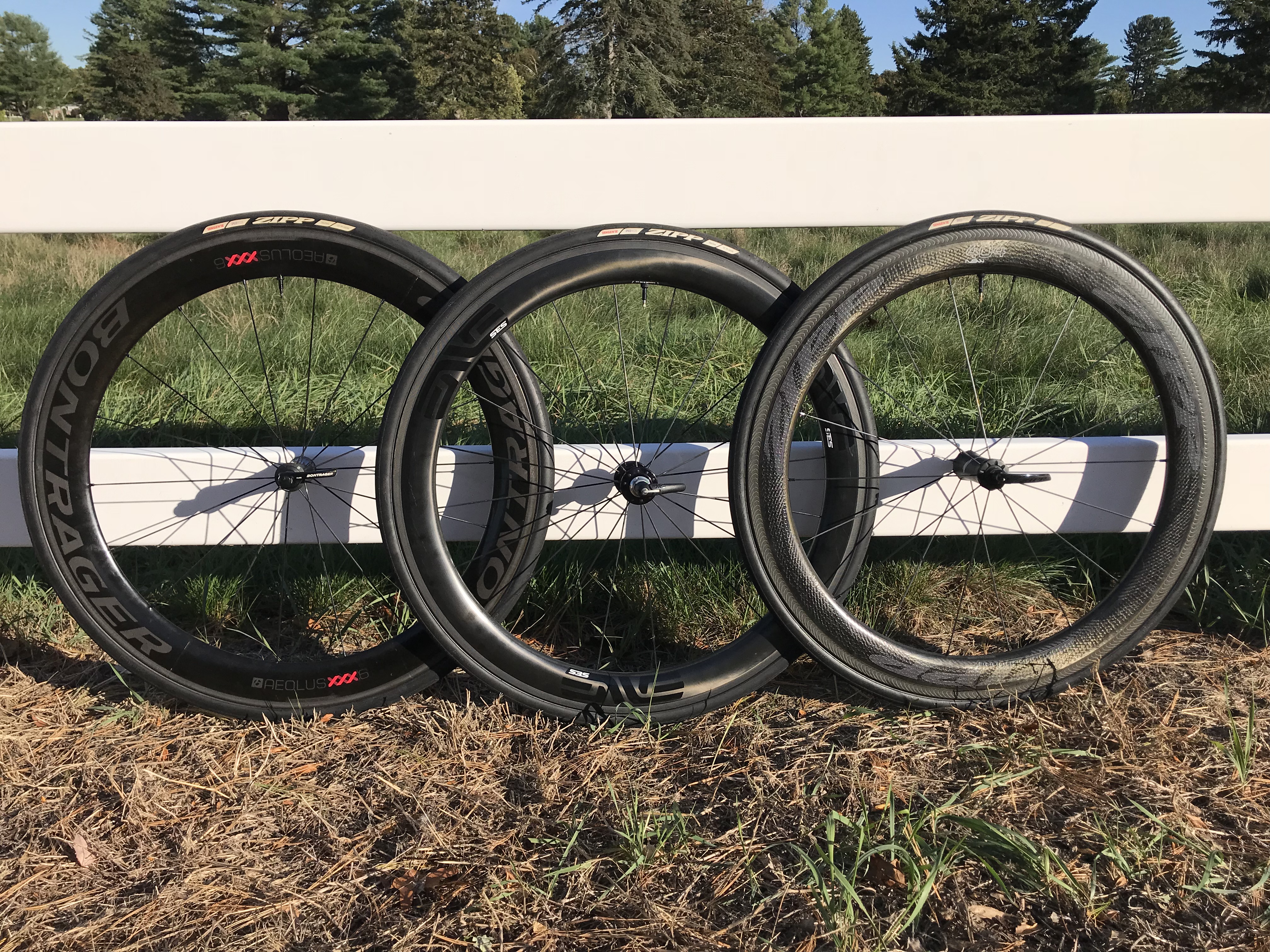
If design specs could tell me which wheelset will be more or less comfortable, responsive, aero, etc., I’d never have to ride them to determine their performance differences. Unfortunately, design doesn’t mean performance.
Deeper doesn’t mean faster – Because of their aero differences, a 50mm deep wheelset isn’t always going to be faster than, say a 40mm deep one, that has a different rim profile, spokes, and nipples. A ton of work goes into testing different rim profiles based on different assumptions on what angles the wind is coming from, what percentage of the time it comes from each angle, how fast the rider is going, etc.
The amount of friction in your hubs can also affect your speed. Having a mounted and inflated tire that is sufficiently narrower than the rim to allow the air to pass from one to the other without breaking free can also affect the drag from your wheels and the speed your ride.
Here again, our recent, non-scientific testing of the best aero wheels and value carbon wheels doesn’t show a great correlation between depth and speed. Some just feel faster while others feel slower independent of their depth. If there was a clear correlation between deeper wheels and faster speed, I would think we would consistently notice that when we are riding wheels that are within 10mm – 15mm of each other’s depth. We don’t.
Unfortunately, you can’t really depend on the aero claims of wheel makers. Those claims are all over the map and recall what Benjamin Disraeli is believed to have said about statistics: there are three kinds of lies: lies, damned lies, and statistics.
You can make almost any wheelset’s aero performance look good depending on what kind of testing you choose to do and what performance results within those tests you choose to highlight. That doesn’t mean they are faster.
Shallower doesn’t mean less affected by crosswinds – This is much the same story as deeper doesn’t mean faster. One of the good things about testing wheels in the spring and fall is that, at least where I and my fellow testers live, we get a lot of windy days. And, it’s pretty clear that some wheels are better than others and their depth doesn’t dictate these differences.
Yes, a 30mm deep wheelset will almost always be less affected by crosswinds than most 50mm wheelsets. But we’ve ridden 50mm wheelsets that are hardly affected by 15 mph crosswinds and some 35-40mm ones that I don’t want to take out in 10 mph breezes.
These are not “exceptions that prove the rule” situations. While wider, lighter, deeper, etc. will perform better than narrower, heavier, shallower, etc., all else being equal, all else is never equal. There are too many other factors involved for us to be lazy and go with these simple and sometimes overhyped design cues that marketers use to suggest road performance.
Bottom line, choose your wheels based on how they perform and not on their design specs.
SHOP’S A POPPIN’
It’s been about 6 weeks now since I launched Know’s Shop on the site. It’s the one place you can go on the web to compare prices and buy whatever gear, kit, bikes, components, supplies, etc. you are interested in from more than a dozen stores I recommend because they have among the lowest prices, highest customer satisfaction ratings, and widest roadie gear selection of the nearly 100 online stores I track.
The Know’s Shop pages are becoming some of the most visited places on this site (thank you!) and the search tool at the top of the sidebar on every page of the site is an easy way to start your search (thanks designers!). When you click a link from the Shop and buy anything from one of the stores those links take you to, you not only get a great deal from a trusted store, you also help support this site and keep us free of ads and bias.
If you are a deal shopper, you can see a list of them at the bottom of each page of Know’s Shop in the Deals and Discounts box. These are all 10-20% off deals that are category- or store-wide and that need a code. Some of these are exclusive to you as In The Know Cycling readers. All of them are good deals on a wide range of products.
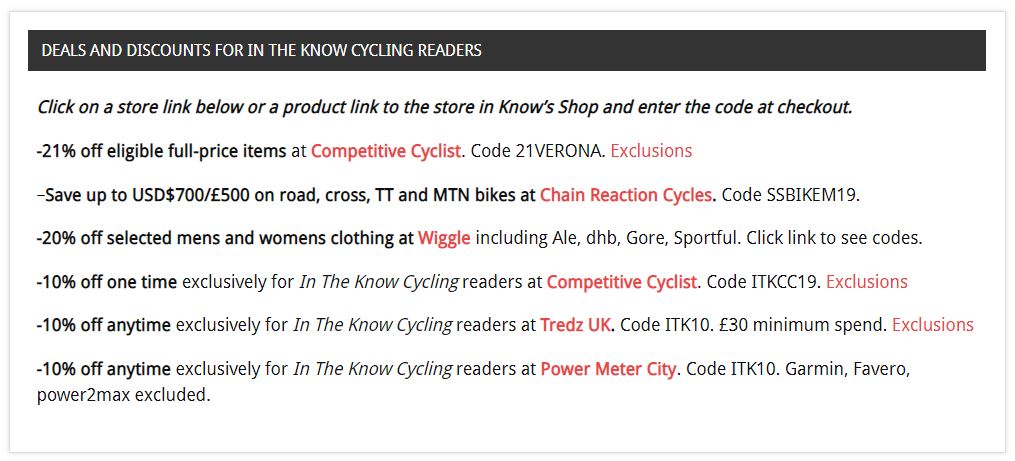
You can find major category-wide, store-wide and exclusive deals requiring codes updated regularly on Know’s Shop
Built into the prices that come up when you do a search at Know’s Shop are the 10% to 50% off sales for a specific product, brand or narrow range of products that don’t require a code. The Shop updates all the products from all the stores every day so you don’t have to search across different store sites to find the best deal. You can compare the prices and sales from different stores all in one place by searching for it at Know’s Shop.
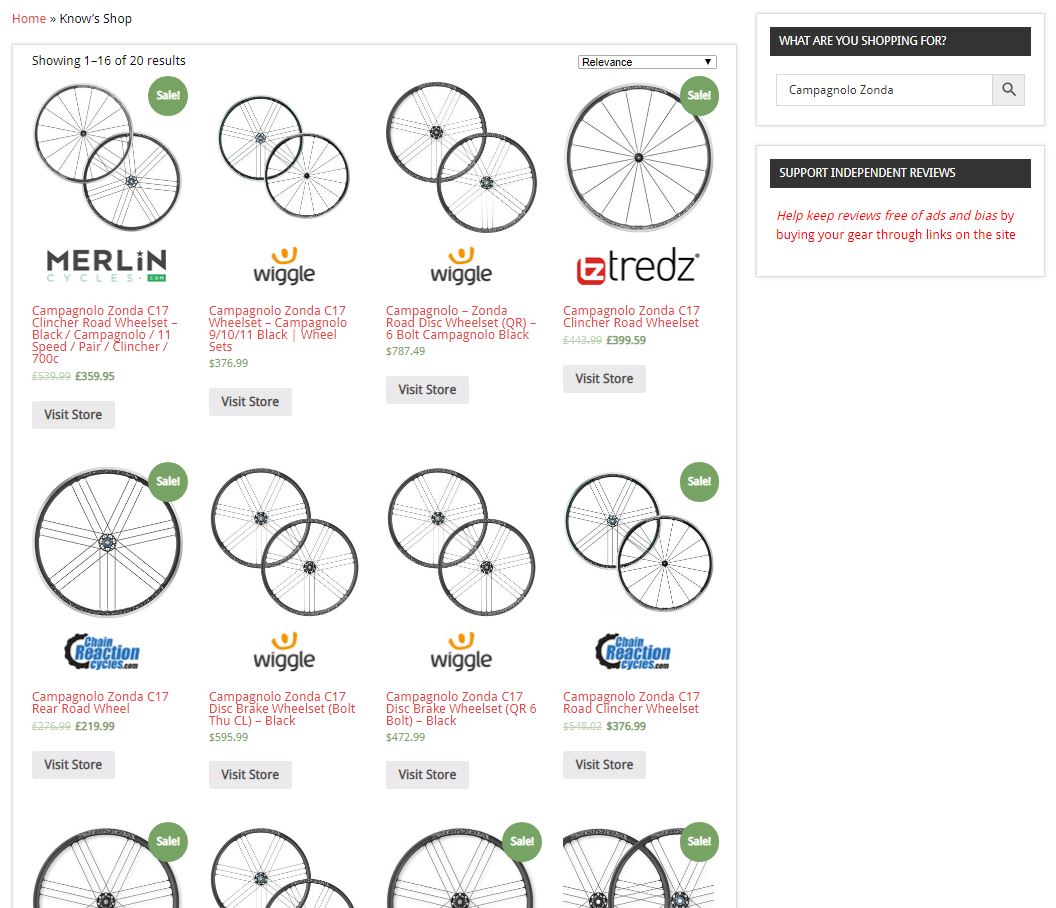
Sale prices are built into the price comparisons at Know’s Shop so you don’t have to go to different sites hunting for the best deal.
So check out the shop, check out the prices on the gear you are looking for, check out the reader exclusive and open-to-the-public deals that require codes, make your life easier and show your support of In The Know Cycling all in one place at Know’s Shop.
It’s all part of my mission to help roadies decide what cycling gear to get next and where to get it.
POD HELP ME!
I’ve been doing some long road trips on family business these last few months and been looking for something beyond music and news to keep me going. Podcasts seem to be all the rage now but I’ve yet to find many great ones on cycling despite doing a lot of sampling.
What I often is the echo chamber of industry news and product announcements (regurgitated marketing talking points about this or that “great” new gear without any critical analysis), pro race previews and recaps (kind of like sports talk radio for cyclists), training programs (very detailed coaching tips. I do like the one from FasCat Coaching), or cycling culture (not my cup of tea, or at least I haven’t found one that talks about roadie culture yet. Are we so boring that no one is doing a podcast about how great it is to be a roadie?)
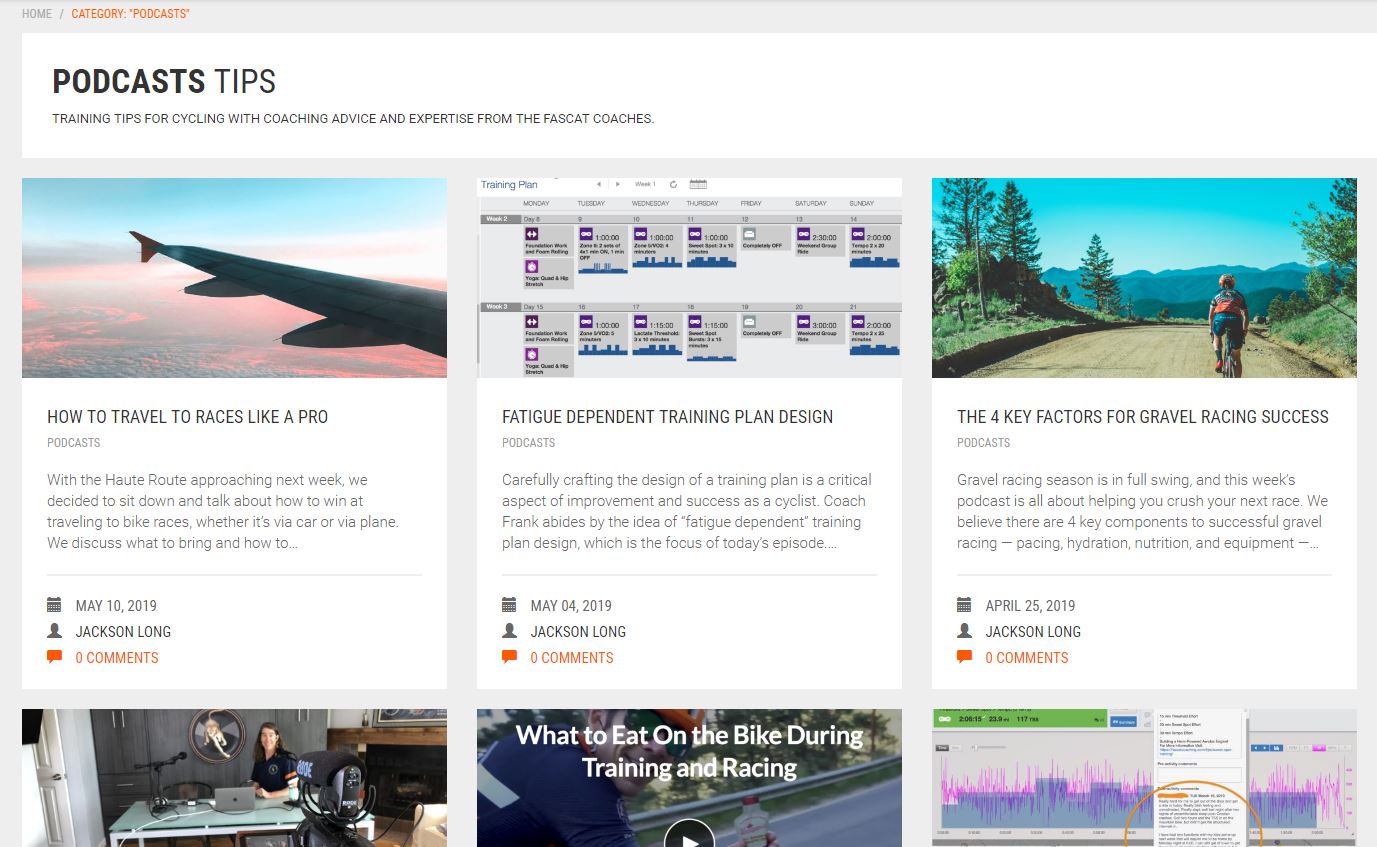
Some podcasts like this one from FasCat Coaching can be informative but I haven’t found many that are. Please share your suggestions in the comments at the end of this post
I have listened to a bunch of episodes from the Marginal Gains podcast that is put out by Silca. It usually tackles and simplifies nerdy, technical topics about bikes, wheelsets, tires, and components. Silca owner and former Zipp chief engineer Josh Poertner does the explaining while a couple of contributors tee up the questions to him in a way that sounds a bit overproduced and unnaturally scripted. If you can get by the too long Silca product promotions at the beginning of each episode and the smartest-guy-in-the-industry persona that Josh brings, you can learn a lot that could advance your road cycling and racing.
Can you help me find some others? I’ve got a weekly date with my lawnmower and yard work now and would love to listen to and learn from a couple of hours of interesting cycling talk to overwhelm the mower engine. Please share your suggestions with me on cycling podcasts you enjoy listening to in the comments section below.
ALL CONSTRUCTIVE FEEDBACK IS WELCOME
I welcome any constructive feedback and opinion that isn’t trolling or snarky. Jack had a long comment you can read below or respond to here at the end of the first part of my recent review of value carbon wheels.
IN THE QUEUE
We’re about halfway through our performance evaluations of value carbon wheels. I’m leaning toward posting a review in the next few weeks of those wheelsets we’ve finished riding and then coming back later in the summer with the rest. If you have an opinion, let me know in the comments below.
Nate, Miles, and I have kicked off evaluations of what will probably be about a dozen cycling sunglasses. Thanks to Competitive Cyclist for sending the first group of these shown above to get us started.
I’m trying to hit this from a few angles. Dedicated cycling sunglasses, others that you can both ride with and also wear around town without looking like a geek, ones that you can add prescription lenses to, high-performance ones, lower-cost ones, etc.
What I can tell you so far is that they are almost all better than the ones I’ve been wearing for the last 5 years. How did I let that happen?
In the next month or so, you’ll also see a review of the SRAM RED AXS 12 speed groupset that we’ve been riding for a few months, my take on the Continental Grand Prix 5000 TL tires, some new jerseys and bibs good for the spring and summer riding, and a few other additions to category-wide, comparative reviews previously posted.
* * * * *
That’s it for now. Thanks for reading and supporting the site. To keep in touch with what I’m posting and your fellow roadies are commenting on, use the popup form to get an email when new posts come out and the icons at the top to follow me on Twitter, Facebook, and Instagram. There’s also an icon you can click to get posts sent to your RSS reader.
Thanks and enjoy your riding safely.
In The Know Cycling supports you and your fellow enthusiasts by doing hours of independent and comparative analysis to find the best road cycling gear and kit to improve your riding experience.
You support us and save yourself money and time by buying anything at all through the links to stores we’ve picked for their low prices and high customer satisfaction. These stores pay us a small commission when you buy there after clicking on these links. Thank you.
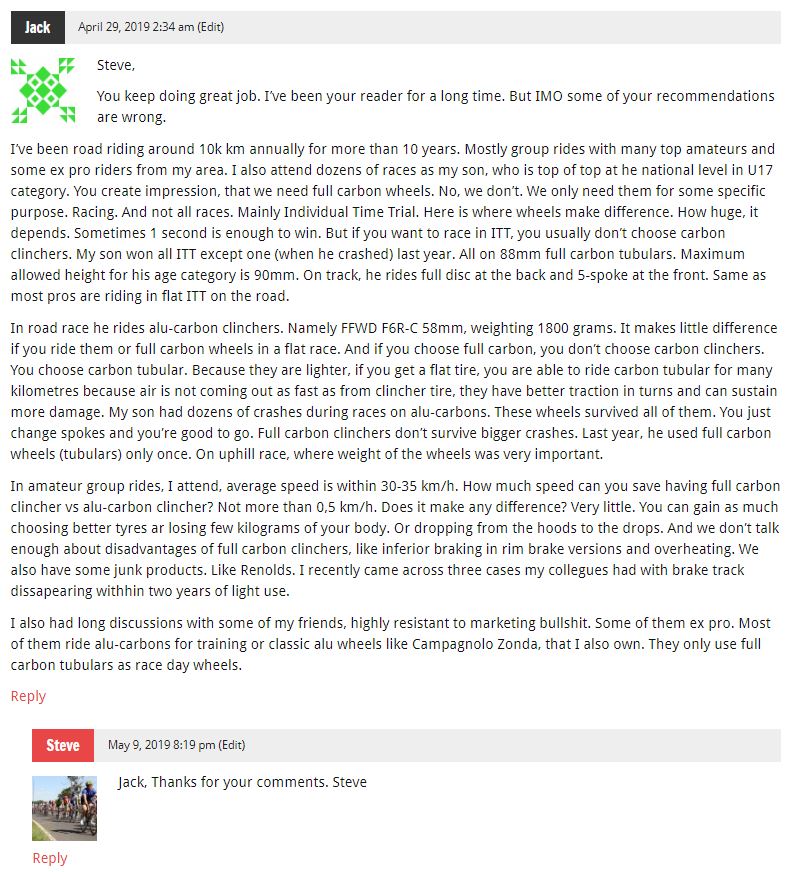
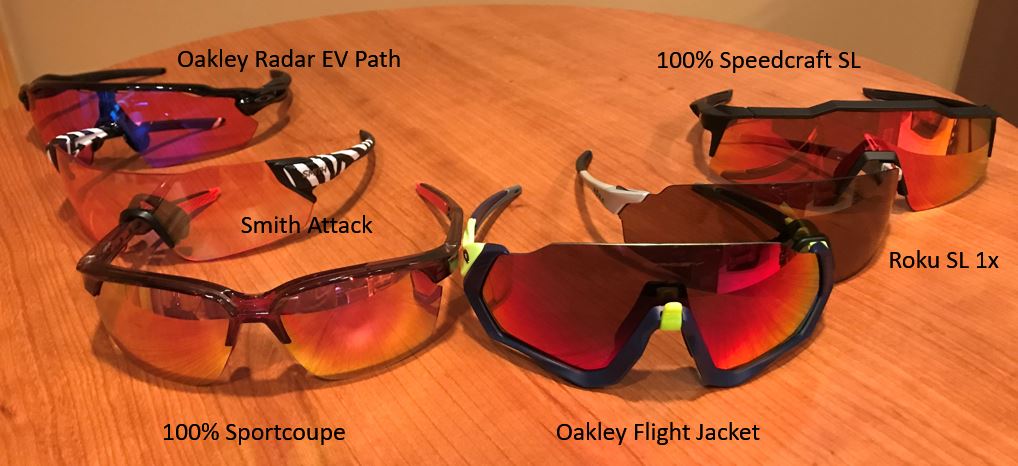
Podcast suggestion… The Trainer Road pod cast is very entertaining (done weekly) and informative. Good tips, interviews and banter. Am working my way through the back catalogue on my commute. (I’m not a trainer road user nor am I affiliated in any way)
Thanks for your informative site and independent, real world testing, keep up the good work 🙂
If you are looking for a roadie pod try this one
https://thecyclingpodcast.com/wp-login.php
I have come across this site as I am researching a new wheelset, and I must say that it is the most balanced and informative info I have found online, It has already helped narrow down my options which felt like a minefield before. I am now looking to buy an all round carbon clincher wheelset so am waiting for part 2 anxiously, I have 4 weeks before my colnago arrives and I want to deck it out with good wheels for my rolling UK rides. That being said I stretched myself to buy the Colnago and di2 etc so really only have £1000/$1300 left to spend. My current front runner is Fulcrum racing quattro carbon as I like the idea of AC3 braking, Mid profile and good stiffness for my 84kg. I know they are probably not the latest in aero but I probably dont go fast enough, and online at £789 I just think is a great deal. Will these be reviewed, and is my logic anywhere near correct?
Dean, thanks for your feedback. Much appreciated. Congrats on the new bike. I don’t currently plan to review the Fulcrum Racing Quattro Carbon but will publish my first set of reviews in the “value carbon wheelset” category later this week. Most rim brake wheelsets, even at the price point of the Fulcrum have moved to wider and more modern/aero rim profiles than what the Fulcrum offers. Not sure what your logic is – price, stiffness, braking – but that isn’t enough for me to judge how sound your decision is. Suggest you review my post on how to choose a wheelset for you to develop it further and help you build confidence in your decision. Best, Steve
Steve,
Your website was a benchmark for me, regarding wheel knowledge for long time. Unfortunately it didn’t develop into serious resource presenting deeper knowledge. During last few years, wheel manufacturing went through serious changes. Wheel manufacturers from Far East, started to manufacture products that can compete with major brands (for example Yoeleo). Aero testing done by manufacturers like Specialized, apperead seriusly flawed. Same concerns yaw angles. They are different for someone riding 30 km/h and different for someone riding 50 km/h. The most important work we can read about regarding aerodynamics was done by Hambini, SwissSide and DT Swiss ans some British tcoaches and engineers on track. Your website doesn’t say anything about melting temperature point for carbon wheels. Cheap carbon wheels usually have melting point between 70-100 Celsius. Top products around 230, like Shmolke that advertises this fact on its website. Zipp and Enve are probably on higher end scale. We also know very little how manufacturers approach heat dissipation. Those that do some serious work, are able to use methods to direct heat towards spokes. Brake track affects heat dissipation a lot. Udually the better brake track, the more heat produced. Some use kevlar, some basalt. Some have brake track dissapearing very quickly (Reynolds Assault). Some have pretty bad aerodynamics in independents test like Flo and Hunt. Some are very hard to destroy (Zipp, test on Tour Magazine), some very easy to destroy (cheap products from Far East). You also miss a lot of outstanding European products like Schmolke, Lightweight, FFWD, SwissSide or DT Swiss. You also seem to advertise full carbon clinchers over alu-carbon clinchers a lot. HED with their Hed Jet showed that well manufactured alu-carbon wheels can beat most average full carbon wheels. We as consumers, also need more info on how deep wheels from different manufacturers are affected by strong side winds. I hope you will be able to pull more data from manufacturers and publish it on your website. Best Regards and keep doing what your’e doing.
Jack, Once again, I appreciate your passion and comments. In them, I see the effect of various claims made from different parties inside and outside of the cycling industry.
While I’m aware of most of what you’ve mentioned, my evaluations and reviews attempt to focus on what I and my fellow road cycling enthusiast testers experience rather than what points the industry or specific suppliers are trying to make. As such, claims and counterclaims, for example about aero performance from Specialized or FLO or Hambini are interesting but don’t play into my assessment of aero performance.
As road cycling enthusiasts (and not as pro road or track racers), we don’t experience the same things that happen in Spech’s wind tunnel or FLO’s CFD models or Hambini’s aerospace wind tunnel. My fellow testers and I can tell, however, whether the wheels we’re riding are comparatively better or worse or average in maintaining our momentum or being affected by crosswinds in varying road and wind speeds given the rigs and roads and routes we regularly ride. That’s what I try to report on. Same goes for how we evaluate stiffness and acceleration and braking and the other performance measures that are important to me as a road cycling enthusiast.
That’s essentially the point of this post. How the gear actually performs on the road in our normal riding situations for roadies like me and my fellow enthusiasts is what I and my fellow testers are trying to discover and share with readers.
The specs and claims are nice to know, sometimes even interesting if you’re curious about how well product design aligns or misaligns with actual performance based on the on-the-road evaluations of the kind of roadies the product is intended for. But that’s about as far as it goes in terms of its value in helping reach a buying decision or product recommendation. Best, Steve